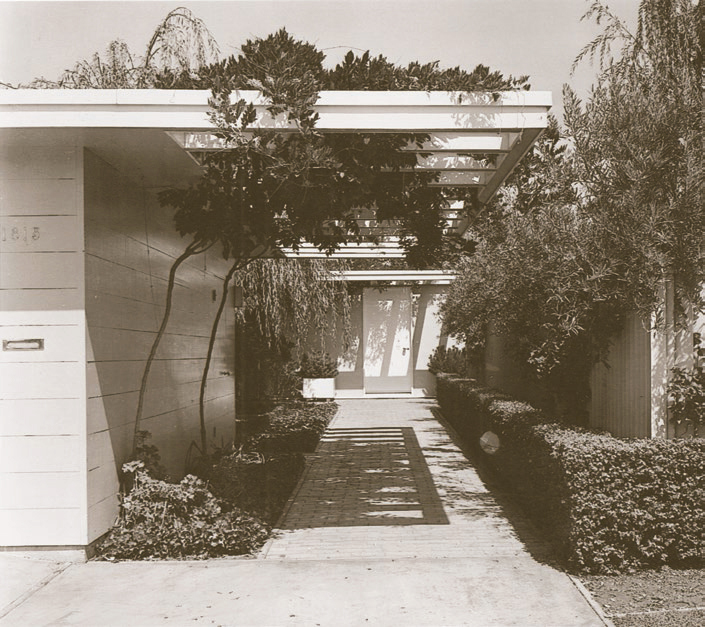8 Great Modern Masters - Page 3
 |
|
|
 |
|
|
2. JOHN FUNK
Today, the sort of homes that John Funk (1908-1993) designed can be found throughout the Berkeley Hills and beyond, an accepted part of the landscape.
But when Funk, who had worked for Wurster from 1934 to 1938, began turning them out in earnest right after the war, they were shocking in their simplicity.
"For the first time in our history," Elizabeth Gordon, editor of House Beautiful, wrote in 1947, "a truly American and truly contemporary style has crystallized on a countrywide basis." This was for an article that included Funk's breakthrough design in Modesto, the Heckendorf house, built in 1939.
Funk's houses are both beautifully designed and beautifully built, like fine cabinetry. He gloried in redwood planks and redwood- or mahogany-faced plywood. Many of his homes had interior courtyards surrounded by wings of living space.
Funk integrated gardens with his homes—often in the entry courtyard. "With my father you went through a little garden" to get into the house, architect Dan Funk, John's son, said.
Like many of his peers, Funk leaned to the left in his social views, and one of his earlier projects was an experiment in communal living. Along with architect Joseph Allen Stein he designed homes for Ladera, an open-to-all-races cooperative housing project on the Peninsula. When the project failed, in part because of opposition to its racial integration, Joe Eichler took over part of the site.
Funk designed about 50 homes, quitting homes for educational and institutional work in 1957. His decision illustrates one of the challenges that faced residential architects back then.
The Bay Tradition was all about small, unpretentious houses. Buyers were often professors, teachers, professionals, small-business owners. Profits for architects were not high—particularly for those as meticulous and detail-oriented as Funk.
For one house, Dan Funk recalled, his father did the number of drawings that a large architectural firm would have done for a major museum. "He couldn't make money doing that at all, so he got out," Dan said. "He just couldn't bat out a set of drawings."




